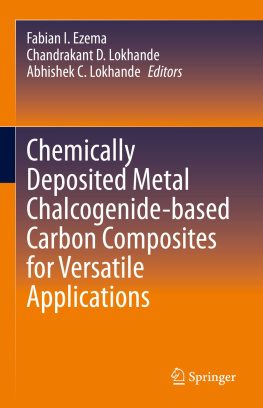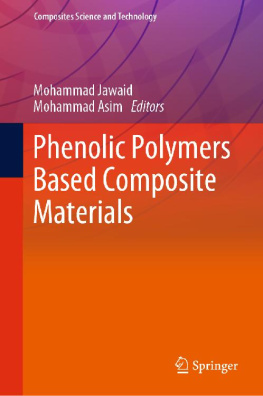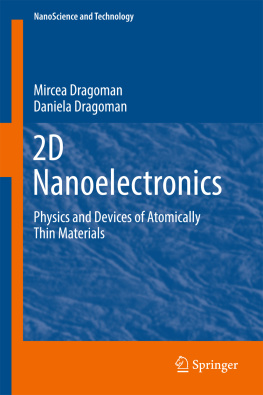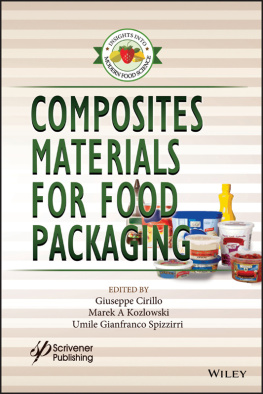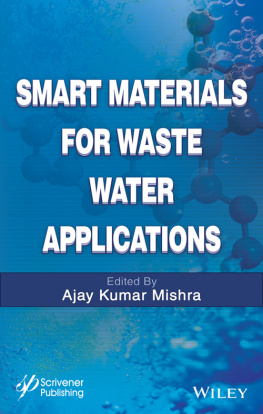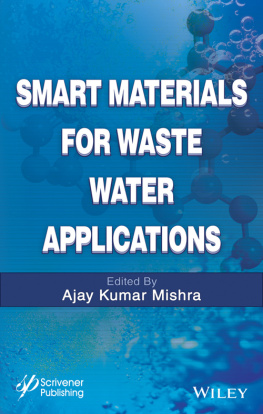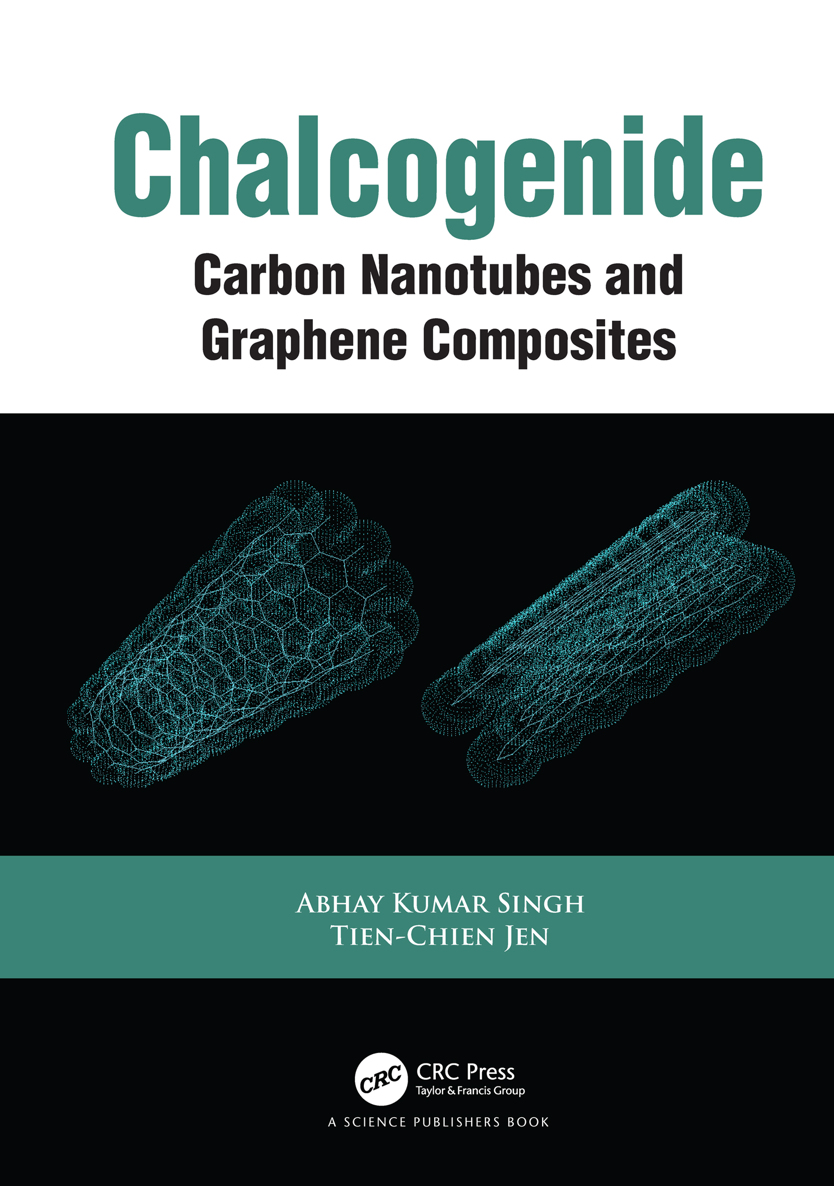
Chalcogenide
Carbon Nanotubes and Graphene Composites
Abhay Kumar Singh
Department of Mechanical Engineering Science,
University of Johannesburg, South Africa
Tien-Chien Jen
Department of Mechanical Engineering Science,
University of Johannesburg, South Africa
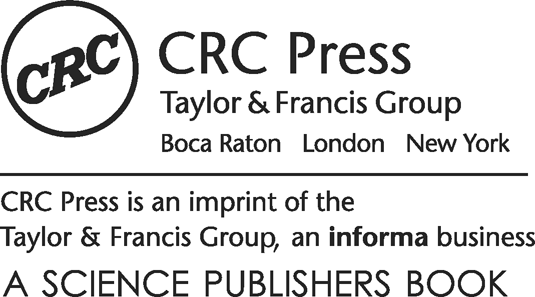
Cover credit: Cover illustration reproduced by kind courtesy of the authors.
First edition published 2021
by CRC Press
6000 Broken Sound Parkway NW, Suite 300, Boca Raton, FL 33487-2742
and by CRC Press
2 Park Square, Milton Park, Abingdon, Oxon, OX14 4RN
2021 Taylor & Francis Group, LLC
CRC Press is an imprint of Taylor & Francis Group, LLC
Reasonable efforts have been made to publish reliable data and information, but the author and publisher cannot assume responsibility for the validity of all materials or the consequences of their use. The authors and publishers have attempted to trace the copyright holders of all material reproduced in this publication and apologize to copyright holders if permission to publish in this form has not been obtained. If any copyright material has not been acknowledged please write and let us know so we may rectify in any future reprint.
Except as permitted under U.S. Copyright Law, no part of this book may be reprinted, reproduced, transmitted, or utilized in any form by any electronic, mechanical, or other means, now known or hereafter invented, including photocopying, microfilming, and recording, or in any information storage or retrieval system, without written permission from the publishers.
For permission to photocopy or use material electronically from this work, access
Trademark notice: Product or corporate names may be trademarks or registered trademarks and are used only for identification and explanation without intent to infringe.
Library of Congress Cataloging-in-Publication Data
Names: Singh, Abhay Kumar, 1976- author. | Jen, Tien-Chien, 1959- author.
Title: Chalcogenide : carbon nanotubes and graphene composites / Abhay
Kumar Singh, Tien-Chien Jen.
Description: First edition. | Boca Raton : CRC Press; Taylor & Francis
Group, 2021. | CRC Press is an imprint of the Taylor & Francis Group,
an informa business. | Includes bibliographical references and index.
Identifiers: LCCN 2020031837 | ISBN 9780367203146 (hardcover)
Subjects: LCSH: Chalcogenides. | Nanocomposites (Materials) | Carbon
nanotubes. | Graphene.
Classification: LCC QD169.C5 S54 2021 | DDC 546/.72--dc23
LC record available at https://lccn.loc.gov/2020031837
ISBN: 978-0-367-20314-6 (hbk)
Typeset in Times New Roman
by Shubham Creation
This book is intended for students, researchers and scientists working in the field of chalcogenide nanocomposites or nanocomposite science from broad subjects such as physics, chemistry and nanotechnology and materials science. It would be mainly helpful for researchers, scientists, doctoral students as well as master and graduate levels university/college students, who wish to build a career in the area of chalcogenide-carbon nanotubes composites, chalcogenide-graphene composites, composite nanoscience and nanotechnology.
The prime goal of the book is to provide a clear idea on newly established chalcogenide-carbon nanotubes and chalcogenide-graphene composite materials in the glassy system and provide interpretations on their physio-chemical mechanisms as well as possible future applications in the area of nanoelectronics, optoelectronics, biomedical etc.
An effort has been made to present the topics in the book in a very simple manner. This current research book contains seven chapters, whose topics broadly deal in the beginning with an introduction of chalcogenide glasses to chalcogenide-carbon nanotubes, chalcogenidegraphene composites as well as their potential applications, including an interpretation of their deep physiochemical mechanism at the nanoscale level.
The main features of the book are:
To review the scenarios of nanocomposite science for their wide range of applications in the distinct field of nanotechnology devices and developments.
To illustrate the scenarios of novel chalcogenidecarbon nanotubes and chalcogenide graphene composite science for the glassy system and the vast potential utilities in the various technical areas for device fabrications and developments.
The detailed physio-chemical interpretations are addressed for various kinds of the chalcogenide glassy systems including preparation methods for the fabrication of the advanced nanomaterials functionalization ability to fabricate different kinds of composite materials.
To apprise the consequences of chalcogenide-carbon nanotubes composites materials for their prospective applications. It also points out the established concept of thermal quantum tunneling with a demonstration of highly stiff multi-walled carbon nanotubes, which can disperse and diffuse (partially) in a low dimension chalcogenide glassy system.
To establish the consequences of chalcogenide-graphene composites for their wide range of future applications in various fields. It also acknowledges the concept of thermal quantum tunneling effect with the first successful diffusion (partial) and dispersion of the bilayer graphene in a low dimension chalcogenide alloy scheme.
To enlighten on the contradictory experimental findings of chalcogenide-carbon nanotubes and chalcogenide-graphene composites, in view of predictions of the theoretical concepts on these kinds of possible composites systems.
To notify on subjected composite systems breakthrough experimental findings as well as their interpretations for the possible wide range of applications in various fields in the future.
It discusses the imminent projections and tasks to demonstrate the newly established composite field and their potential nanoscale devices for the safety of the health of society and advanced technology.
Chapter 1
This chapter deals with chalcogenide glassy materials and their potential applications in several scientific and technological areas. Chalcogenide materials have attracted great attention due to their importance in nanoscience and nanotechnology. Their scientific and technological advances and adequate flexibility to make composites with the organic compounds were considered. it also briefly demonstrates the fundamentals of chalcogenide materials and their classifications as well as the emergent nano form of the materials. Therefore, crystalline structures of sulfur, selenium and tellurium are interpreted. The technologically significant polycrystalline chalcogenides such as polysulfides, polyselenides and polytellurides structures are also addressed. Since amorphous chalcogenide materials (or amorphous semiconductors) can have many technical applications, therefore, structural properties of these materials are also interpreted. Chalcogenides technical uses are always productive with their alloys along with other periodic table elements in the form of binary, ternary and multi-components alloys, hence a brief note on such compositions are also provided. Technologically sound chalcogenide glasses or amorphous semiconductors structures, types of bonding and related various theoretical models are addressed. These materials band structures are interpreted with the help of various models, while, the principles of defects are demonstrated from different models. A brief interpretation of the photoinduced effects in these materials is given. Moreover, ionic and electrical conductivities are also considered, and their basic concepts are discussed with the help of different theoretical models descriptions. Subsequently, these materials electrical switching is one of the key properties, therefore, threshold switching and memory switching as well as various switching parameters are also addressed. A brief description on the potential utility of chalcogenide glasses (or amorphous semiconducting materials) is provided.


